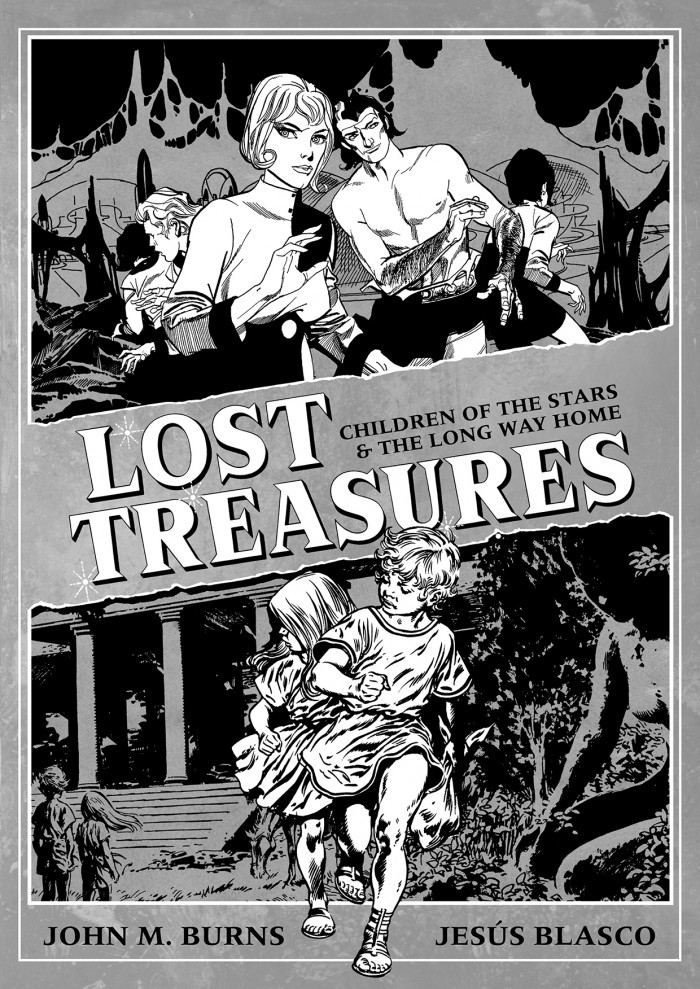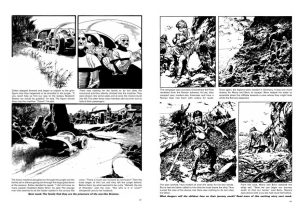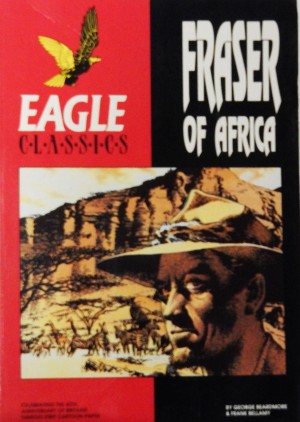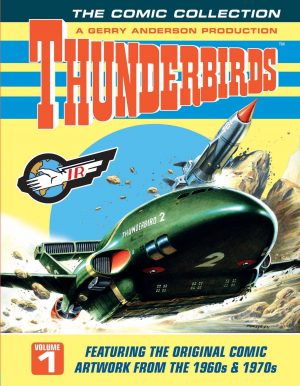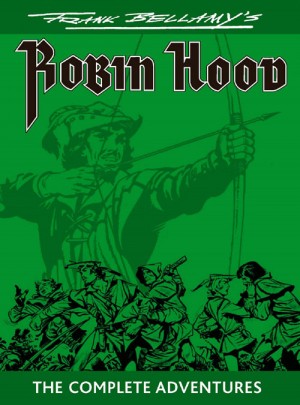Review by Frank Plowright
When educational comic for curious children Look and Learn proved a success in the 1960s, the publishers issued a companion title aimed at slightly younger readers. Treasure featured the same mixture of educational articles, classic illustrated stories and serialised comics, and that’s where the two strips here originated. In the manner of Prince Valiant and Rupert the Bear, the stories are told in two page instalments via illustrations with blocks of text beneath. Sadly, the writer of neither is known.
The allure of ‘Children of the Stars’ is artwork from British great John M. Burns, who in 1970 was over a decade into a career that stretched well into the 2010s. In 3059 the Zexton family move to a new planet for their father’s work. The writer keeps the young audience in mind throughout, expressing the wonder of exploration and learning, and while at first it seems as there’ll be little else, surprises are in store and it becomes a tale of the necessities of survival in adverse circumstances. However, the real imagination is supplied by Burns. There’s already a fine understanding of how to apply light and shade, and he adapts his storytelling to the format. Whereas many other artists drawing SF for children might have opted for generic technology, Burns supplies really imaginative designs, which is all the more impressive as most items are only required for the single page, such as the futuristic car on the sample art.
With only two pages per episode, story opportunities are limited, and when pieced together rather than waiting a week for the next instalment the pace is phenomenal, with locations and situations constantly changing. That feeds into the ending, which is the literary equivalent of the grand piano dropped from height into the street.
‘Children of the Stars’ looks into the future, while 1971’s ‘The Long Way Home’ glances back to the past. In his introduction comics historian David A. Roach notes it may stand as the finest work from Jesús Blasco’s long career. As with Burns, there’s absolutely no attitude of the younger audience deserving less effort. The time spent on background activity or scenery alone would put most contemporary artists to shame, never mind the classical compositions for panels Blasco knew were to be so greatly reduced. Admire those rocks on his sample page.
Beric and Mona are two young Saxon children abducted by Roman forces at the end of the 4th century with the intention they be raised as Roman slaves. The strip title refers to their escape and subsequent adventures heading home. Unlike the earlier strip, which presents a dated view of the future, ‘The Long Way Home’ should still enthral contemporary readers due to the writer focusing on small details as much as Blasco does. An early sequence concerns the importance of Mona’s medallion, the different Scottish tribes are specified, and it’s noted that bears still populated the British mainland. Betrayal is too common a theme, but it’s otherwise a glorious adventure gloriously drawn.
Either story alone is a recovered artistic treasure, but combined they’re beyond price. It’s currently unavailable via online booksellers, so buy direct from Hibernia Comics.
